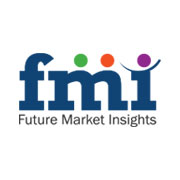North America is anticipated to be the most attractive regional market in the global radiopharmaceuticals market
North America accounted for more than 40% market share in the global radiopharmaceuticals market in 2016 and is expected to witness an increase of more than 100 BPS in its market share over the forecast period. In terms of Y-o-Y growth, North America dominated the global radiopharmaceuticals market and was valued at more than US$ 2,000 Mn in 2015. The market is expected to expand at 6.2% CAGR over the projected period to reach more than US$ 4,000 Mn by the end of 2026. The North America radiopharmaceuticals market is estimated to represent absolute $ opportunity of more than US$ 100 Mn in 2017 over 2016. The growth is stagnant and slow due to major reactors having been shut down in Canada and new reactors installed in place of old ones for better production of radioisotope. North America is expected to be the most lucrative market in the global radiopharmaceuticals market, recording an attractiveness index of 3.6.
Significant growth in the number of cancer and cardiovascular diseases patients in North America is expected to boost the global radiopharmaceuticals market
Widespread availability of SPECT and PET scanning machines will result in a growing number of radio diagnostic and radio therapeutics events in North America. For instance, the number of PET scanning machines installed per head of population in North America are more compared to that installed in Europe, thus leading to increased usage of radiotracers in the region. This growth in North America is expected to continue along with continuous technological improvements in PET scanning devices. The high level of awareness and accessibility to these machines is expected to account for high revenue generation in North America. This factor is boosting the overall growth of the global radiopharmaceuticals market. The other factor impacting the global radiopharmaceuticals market is the rising prevalence of cancer in North America. This has significantly increased the number of nuclear medicine procedures performed in the region and this is the precise reason that the market for radiopharmaceuticals is steadily growing in North America. There has been a rising number of cardiovascular diseases among the people in North America due to aging population, unhealthy food habits and rising obesity. The increasing number of cardiovascular patients is expected to boost the sales of radiopharmaceuticals, which would eventually create growth in the global radiopharmaceuticals market.
Request For Report Sample: http://www.futuremarketinsights.com/reports/sample/rep-gb-1992
Gallium-68 and Lutetium 177 sub-segments of the radioisotope segment are likely to dominate the North America radiopharmaceuticals market
Gallium-68 and Lutetium 177 are dominant sub-segments of the radioisotope segment in North America. Gallium-68 has gained immense popularity since the last one year in the field of nuclear medicine, especially in the diagnosis and evaluation of prostate cancer. This is in heavy reliance with incorporation of several technological leaps and entry of new radiotracer- 68Ga-PSMA-11, developed by the University of Heidelberg. Additionally, marketing authorisation of the first 68Ge/68Ga generator, manufactured by the German company Eckert & Ziegler, has also positively impacted the penetration of 68Ga-PSMA-11 tracer in the treatment of prostate cancer in North America. Despite a shorter half-life, Gallium-68 has an ideal profile as a PET imaging agent. Several manufacturers in North America are focussing on introducing cold kits for the 68Ga-labeling of tracers (ANMI, Belgium), thus opening the gateways for 68Ga in PET scanning. Iodine-131, a therapeutic radiotracer continues to be the ideal tracer for the treatment of not only thyroid cancer but also other therapeutic indications. However it is being slowly replaced by Lutetium-177 (Lu-177) in North America. Lu-177, low-energy β-particle emitter is identified to be one of the emerging radiotracers for the treatment of metastatic castrate-resistant prostate cancer (mCRPC) and neuroendocrine tumors.
Send An Enquiry: http://www.futuremarketinsights.com/askus/rep-gb-1992
radiopharmaceuticals market
Market share of companies operating in the global radiopharmaceuticals market
The global radiopharmaceuticals market is highly consolidated with a few companies that offer advanced technology systems and nuclear medicines for treating diseases. However, the global market is dominated by top five players accounting for over 89% share. Siemens Healthineers accounted for the largest share of around 41.2% of the global market in 2015. The company dominated the market owing to its diversified product portfolio, extensive geographical presence, and acquisition strategies. GE Healthcare accounted for the second largest share of around 30.1% and Mallinckrodt plc. accounted for the third largest share of around 9% in the global radiopharmaceuticals market.
Browse Full Report Radiopharmaceuticals Market Segmentation by Radioisotope – Technetium-99, Fluorine-18, Iodine-131, Leutetium-177, Yttrium-90, Gallium-68, Gallium-67, Rubidium-82, Iodine-123, Iodine-125, Indium-111; By Source – Cyclotrons, Nuclear Reactors; By Application – Oncology, Cardiology, Gastroenterology, Neuroendocrinology, Neurology, Nephrology; By End User – Hospitals, Diagnostic Imaging Centres, Ambulatory Surgical Centres, Cancer Research Institutes: http://www.futuremarketinsights.com/reports/radiopharmaceuticals-market

